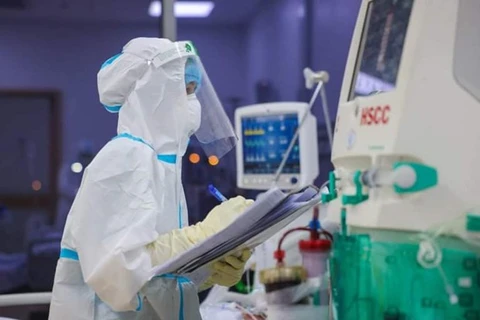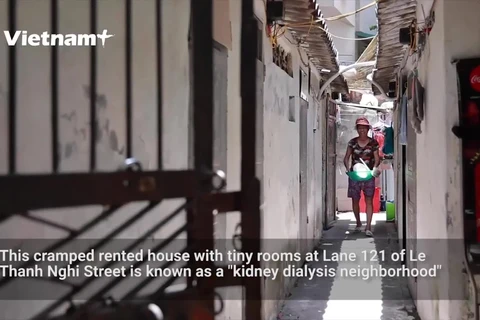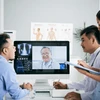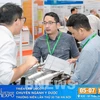Hanoi (VNA) – Vietnam currently has 350 hemodialysis units with 3,500 medical staff and over 5,500 machines performing dialysis for about 33,000 patients, the recent second scientific conference of the Vietnam Dialysis Association (VDA) revealed.
VDA Chairman Dr Nguyen Huu Dung said Vietnam's dialysis industry is highly appreciated in Southeast Asia and has made strong progress in catching up with the world-class level, most notably with techniques such as cyclic dialysis, online hemodiafiltration and blood adsorption.
However, with many kidney failure patients needing dialysis, a shortage of dialysis equipment has occurred. He said that patients have to undergo dialysis on shifts, even at night.
"Despite efforts over the past time, which are highly appreciated, Vietnam's dialysis sector is facing challenges when chronic kidney failure patients are younger, and the number of patients in need of treatment is on the upward trend. Hence, the Health Ministry and Vietnam Social Security's incentives and workforce training support are needed.
In Vietnam, the demand for kidney transplants remains huge, but about 4,500 patients had their kidneys replaced. Moving forward, the figure is expected to increase over the following years, posing challenges to the sector.
According to the VDA, there remains a dialysis equipment shortage and an overload in several hemodialysis units. In particular, many units need to be faster-paced in replacing outdated equipment. Over 900 dialysis machines, or over 18% of the total, are over a decade old. This means that they have expired and must be replaced.
Due to the small number of hemodialysis machines and healthcare workers, many units have to run three, four or even five shifts daily, exerting a lot of pressure on the medical staff. According to a survey, a doctor in a centre takes charge of up to 37 hemodialysis machines, making it difficult to handle complications that may occur. A doctor in another centre even attends to 125 patients.
It has been estimated that over 850 million people globally suffered from chronic kidney disease in 2018. The incidence in men and women stood at 10.4% and 11.8%, respectively, with between 5.3 million-10.5 million people on renal replacement therapy, the VDA reported.
Statistics from the health sector indicate that along with the increase in patients suffering from diabetes and hypertension, the number of patients with end-stage chronic kidney disease and kidney failure in need of hemodialysis is constantly increasing as kidney failure is a dangerous complication of these two diseases.
Common kidney diseases today include kidney stones, glomerulonephritis, acute chronic renal failure and kidney cancer. Acute and chronic renal failure are very common conditions usually caused by complications of many other diseases.
Chronic kidney disease often progresses silently without symptoms in the early stage. Therefore, it is important to detect the disease early in high-risk groups, especially those with diabetes, hypertension and a family history of kidney disease. Those at risk of kidney disease need annual screening tests and early intensive treatment to prevent it from progressing to the end stage.
Symptoms of kidney disease include swelling of the limbs, changes in urination like blood in urine and painful urination, fatigue, weight loss, possibly fever and headache.
About 800,000 patients with end-stage renal diseases, or 0.1 percent of the country's population. More than 50 percent of patients die within five years of renal dialysis, and only 15 – 20 percent can live at least ten years under this treatment.
They need to have dialysis three times a week, costing 100 – 150 million VND (4,300 – 6,500 USD) each year, a burden on patients and their families and society.
However, kidney diseases can be controlled, and patients can have a normal life if they receive good treatment./.























